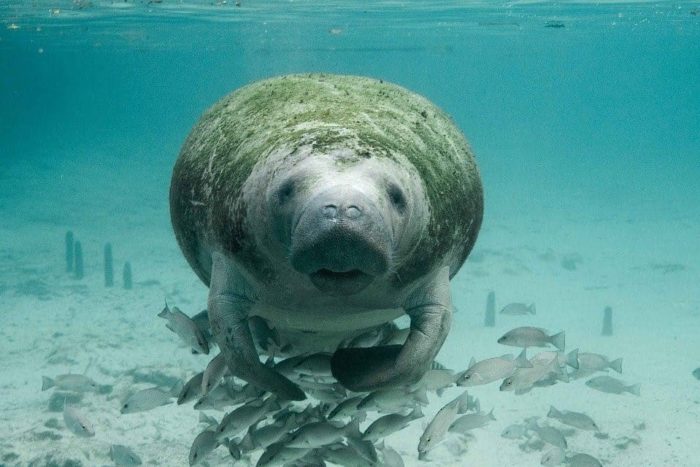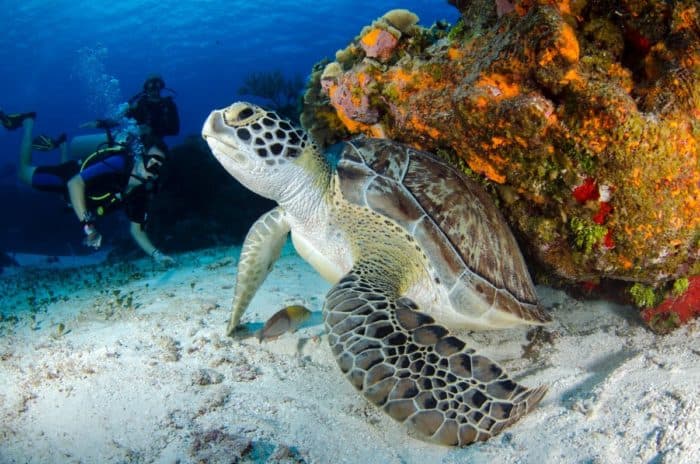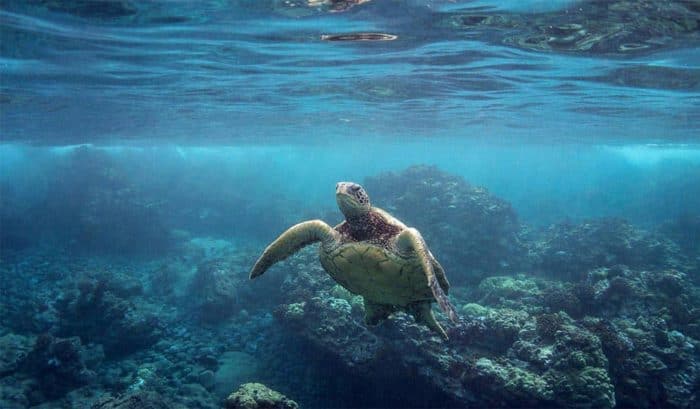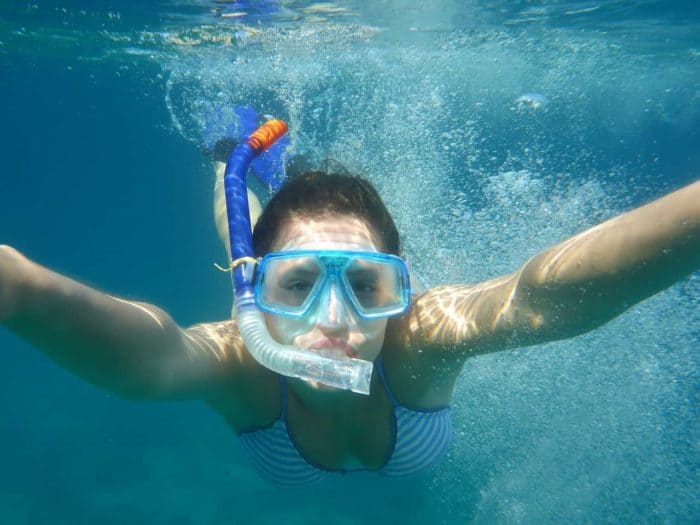How to Use a Snorkel Mask
There are two types of snorkel masks: a classic snorkel and mask combination that is two individual pieces of equipment and a full face snorkel mask. You will need to understand how both of these snorkel masks work to know how to use a snorkel mask.
When it comes to the snorkel and mask combination, it is important to know that many different snorkels can be included in the snorkel mask combination. Not all snorkels are created the same, so it is important to know the type of snorkel that is included with your snorkel mask so that you know how to use it.
Types of Snorkels
Many different types of snorkels can be included with your snorkel mask; they include the classic snorkel, flexible snorkel, semi-dry snorkel, and dry snorkel.
We will discuss what the differences are among these types of snorkels, as well as the advantages and disadvantages of each.
Classic Snorkel
The classic snorkel is the type of snorkel you might think of when you think of the first snorkel set you had when you were a kid. It has an opening at the top of the snorkel tube that does not prevent water from entering the snorkel tube or the mouthpiece.
When water enters the tube of the snorkel, it will have to be expelled by forcefully exhaling through the mouthpiece. This will clear the airway tube of the snorkel and allow you to breathe.
Advantages:
- Affordable
- Largely available
- Easy to use
Disadvantages:
- Water can easily enter the snorkel tube and mouthpiece
Flexible Snorkel
A flexible snorkel has a flexible section built into the snorkel that allows you to move and position the snorkel both during and when it is not in use.
A flexible snorkel will allow you to move your head more freely and easier without worrying about where the snorkel will go. The flexible tubing allows the snorkel to move away from the face when it is not being used, which makes it a great option for diving.
There is a purge valve located on the bottom of the snorkel that enables water to be quickly and easily expelled from the mouthpiece if there is any present.
Advantages:
- Ideal for both scuba diving and snorkeling
- Comfortable and easy to use
- Allows for greater head movement when used
- Built-in purge valve for easy water expulsion
Disadvantages:
- The purge valve can become blocked by sand or other debris
Semi-Dry Snorkel
A semi-dry snorkel has a splash guard built into the top of the snorkel that will attempt to keep water from entering the tube and mouthpiece of the snorkel. A semi-dry snorkel does exactly that: keeps the snorkel semi-dry. It is not designed to completely keep water from entering, but it is also not designed without any form of water purge system.
When water enters the snorkel, as it likely will because of the built-in splash guard, it will be expelled through the purge valve quickly, easily, and effectively.
Advantages:
- Splash guard will keep some water out unless the snorkel becomes fully submerged
- Built-in purge valve to expel the water that enters the snorkel
- Large availability
Disadvantages:
- Water will not be completely prevented from entering the snorkel
Dry Snorkel
A dry snorkel will completely block water from entering the snorkel. Dry snorkels are not recommended to be submerged; however, if they become submerged, the float valve at the top of the snorkel will engage to prevent water from entering the snorkel tube and mouthpiece.
Should the float valve malfunction and water enters the mouthpiece, there is a built-in purge valve system that will easily expel water from the mouthpiece.
Dry snorkels are usually made of high-quality material, like soft silicone that will keep your mouth comfortable while holding the mouthpiece.
Advantages:
- No water should ever enter the snorkel tube or mouthpiece
- The built-in purge valve will easily expel any water that enters the mouthpiece
- Most durable of all snorkel options; requires less cleaning and maintenance because water does not regularly enter the snorkel
Disadvantages:
- Can slow you down if diving
How to Use Each Type of Snorkel Mask
Now that we know the different types of snorkels that are available, we can learn how to use each type of snorkel mask.
How to Use a Classic Snorkel
To use a classic snorkel mask, you will need to keep your face down so that the snorkel always stays above the water with enough of the snorkel sticking out of the water to prevent water from entering the snorkel. The snorkel should be attached correctly by a snorkel keeper clip or ring. (Check out our post about how to attach a snorkel to a mask for more information on this.)
If water enters the snorkel, it will need to be expelled. To do this, you will need to powerfully exhale through the mouthpiece of the snorkel to get rid of any water that has entered.
After the water has been expelled from the snorkel, you should take a slow breath to make sure that there is no remaining water that is left in the snorkel, as inhaling too quickly can easily cause you to choke on the remaining water.
Remember to always keep the top of the snorkel out of the water so that water doesn’t enter the snorkel, as this can cause you to choke or trigger panic. If water enters the mouthpiece and you become choked, calmly swim to the surface and clear your airways and the airway of the snorkel while regaining your composure.
How to Use a Flexible Snorkel
Using a flexible snorkel will entail the same method and technique as using a classic snorkel. You will need to keep your head down with your face aimed at the bottom of the pool or sea bed. This will ensure the snorkel stays out of the water and free from water.
The splash guard built into the top of the snorkel will help keep out any water that tries to enter the snorkel tube. There will also be a built-in valve purge that will easily eliminate any water that has entered the snorkel tube and mouthpiece.
When scuba diving, simply let the flexible snorkel naturally drop away from the face so that it stays out of your way but still attached to your snorkel mask.
How to Use a Semi-Dry Snorkel
A semi-dry snorkel will have a splash guard built into the top of the snorkel that will attempt to keep splashing water from entering the snorkel. Semi-dry snorkels are not recommended to be submerged as the splash guard will not prevent water from entering the snorkel tube and mouthpiece.
Instead, the splash guard on a semi-dry snorkel is intended to keep splashing water from waves or water that is splashed while kicking during swimming from entering the snorkel tube.
When water enters the snorkel tube and the mouthpiece, there is a purge valve that will expel the water from the snorkel and clear the airways.
How to Use a Dry Snorkel
Using a dry snorkel will allow you to completely submerge your snorkel without fear of water entering the snorkel tube and mouthpiece. The float valve at the top of the snorkel will seal completely and prevent water from entering the snorkel when the snorkel is submerged. This makes the dry snorkel perfect for diving or going underwater for certain periods of time.
If water enters the snorkel, it is easily removed through the purge valve that is built into the bottom part of the mouthpiece. This will remove any excess water through the sealed, small opening when you exhale. Make sure you exhale slowly when using a snorkel with a purge valve. Likewise, remember to inhale slowly after the water has been expelled so that you don’t accidentally ingest any remaining water from the mouthpiece.
Using a Snorkel and a Mask
The snorkel and mask will go together unless you have a full face snorkel mask, which we will mention momentarily.
The snorkel and mask will need to be connected properly so that you can move your head and see where you’re going while continuing to breathe through the attached snorkel.
The snorkel mask you choose may have one large lens or two individual lenses that make up the viewing window. Either of these options that you choose will need to be attached to your snorkel and used correctly.
The most important piece of information you must know when using a snorkel mask is how it should fit.
The snorkel mask should fit firmly against your face so that it creates an airtight seal that does not allow water to enter. This airtight seal should not be painful or uncomfortable. It should only have enough pressure to keep the mask securely in place while keeping water from entering.
If your mask leaks or water enters through an opening, don’t panic. This is normal even in the most leak-proof models of snorkel masks. You will need to do what is called a mask clearing.
A mask clearing is when you take the bottom of your mask and lift it from your face while keeping the top of the mask in place. You will exhale through your nose and place the mask back on your face to clear the water. In some instances, you can also tilt your head up and do this same process while keeping the mask sealed firmly against your forehead.
The angle of the mask combined with the exhalation through your nose will clear any water that has made its way inside your mask.
How to Use a Full Face Snorkel Mask
A full face snorkel mask is a snorkel mask that has a snorkel built directly into the mask, and the mask covers both the mouth and the nose. The full face snorkel mask is equipped with a dry snorkel as it is designed for periodic submersion underwater.
A full face snorkel mask should be equipped with an air circulation mechanism that will recirculate fresh air and prevent you from rebreathing CO2, as this can be a dangerous side effect of a cheaply made full face snorkel mask.
Make sure the full face snorkel mask you choose has some form of air circulation or ventilation system so that you won’t inadvertently rebreathe CO2 while wearing the mask. Rebreathing CO2 can cause sickness, dizziness, and, ultimately, unconsciousness if not rectified quickly.
Conclusion
These are the different types of snorkels and snorkel masks that are available today, so it is important to understand the difference among all of the options. Knowing how to use a snorkel mask will help you have a safe, fun, and productive snorkeling excursion, which should be the goal in every snorkeling adventure.
Categories: Snorkeling











